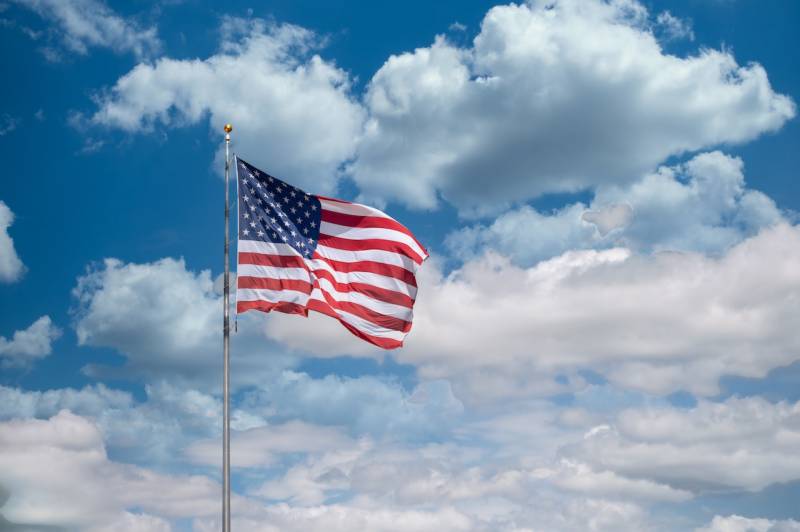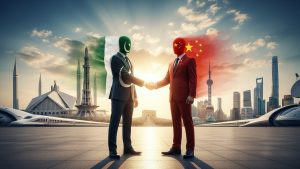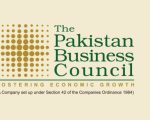“I care not what puppet is placed on the throne of England to rule the Empire on which the sun never sets. The man that controls Britain’s money supply controls the British Empire, and I control the British money supply.” –Baron Nathan Mayer de Rothschild (1777-1836)
“[T]he powers of financial capitalism had another far-reaching aim, nothing less than to create a world system of financial control in private hands to dominate the political system of each country and the economy of the world as a whole. The system was to be controlled in a feudalist fashion by the central banks of the world acting in concert, by secret agreements arrived at in frequent private meetings and conferences.” –Professor Carroll Quigley in “Tragedy and Hope”, p 324
The conspiracy to establish the Federal Reserve System is the greatest conspiracy perpetrated against the people of the United States of America. From the very inception of the Republic of the United States of America, the international banking families ensconced in London, and in some European countries, strove for the control of the U.S. through a privately owned central bank. These families had a network of secret societies, and members of these societies were planted in key positions in the U.S. They were aware of the riches and the power potential of the United States and wished to own it. And for that ownership they intrigued ceaselessly.
A group among the founding fathers of the U.S. were always very aware, and very wary, of what was called “Money Power”. The most prominent among this group were Thomas Jefferson, James Madison and Andrew Jackson. By “Money Power” they meant a rich autocratic elite that would tend to gain control of the country and subvert its constitution and ideals. Thomas Jefferson felt that the best government was the least government. He referred to these elements as “monopolists” and “monocrats”, and regarded them as the greatest threat to the Republic. In fact, the only reason he continued in politics was to safeguard the country against them. The greatest and most powerful “monopolists” could be the bankers with the power to issue money.
The following quote from Thomas Jefferson indicates his extraordinary foresight and depth of thought. He stated: “The Central Bank is an institution of the most deadly hostility existing against the principles and form of our Constitution… I believe that that the banking institutions are more dangerous to our liberties than standing armies. Already they have raised up a moneyed aristocracy that has set the Government at defiance. The issuing power should be taken from the banks and restored to the people to whom it properly belongs. If the American people ever allow the banks to control the issuance of their currency, first by inflation and then by deflation, the banks and corporations that grow up around them will deprive the people of their property until their children will wake up homeless on the continent that their fathers occupied.”
Jefferson had to take a stand against a private central bank because, as soon as the Constitution took effect in 1789, Alexander Hamilton became the Secretary of Treasury. He was one of the directors of one of the very first banks set up in the U.S., the Bank of New York, established 1784. Alexander Hamilton, without any regard to conflict of interest, did several things. He prevented the opening of a new bank in New York that would have competed with his own bank and cut their profits, he made the Bank of New York an agent of the U.S. government for the sale of 200,000 guilders, and, most dangerously, proposed a National Bank.
Antony Sutton quotes George Bancroft: “Hamilton recommended a National Bank with a capital of ten or fifteen million dollars, to be paid one-third in hard money, and the other two-thirds in European funds or landed security. It was to be erected into a legal corporation for thirty years, during which no other bank, public or private, was to be permitted. Its capital and deposits were to be exempt from taxation, and the United States, collectively and particularly, were to become conjointly responsible for all its transactions. Its sources of profit were to be the sole right of issuing a currency of the United States equal in amount to the whole capital of the stock of the bank.” One may note that, in the proposal two-thirds European funds were already injected (the phrase or laded security is just meant to soften this and is deceptive). Which Europeans were to provide these? None other than the international banking families.
Despite the opposition from Senators and the society, Hamilton, through a stacked Senate Committee which included his father-in-law, managed to get have the said bank approved. When the proposal was sent for the final approval of President George Washington, he referred it to Thomas Jefferson, who commented as follows: “I consider the foundation of the Constitution as laid on the ground; That ‘all powers not delegated to the United States by the Constitution nor prohibited by it to the states, are reserved to the states, or to the people.’ … The Bill delivers us bound to the National Bank, who are free to refuse all arrangements, but on their own terms, and the people are not free, on such refusal, to employ another bank.” Hamilton’s National Bank, a private monopoly with Congressional approval was set up in February 1791 as the First Bank of the United States. It had a charter for 20 years.
When in 1810 the charter was to be renewed the U.S. government was reluctant to do so. As a result, the Rothschilds had England declare war on the U.S. The British PM Spencer Perceval, who tried to obstruct this war, was assassinated on May 11, 1812. With Perceval out of the way, war between England and the U.S, broke out and it lasted from 1812-1814 but was inconclusive. The U.S. debt increased from $45 million in 1812 to $127 million in 1815. As a result of the war, Nathan Rothschild was able to get the charter of the Second Bank of the United States on April 10, 1816.
Stephen Mitford Goodson writes: “The artificially induced recession of 1819-21, which was very profitable for the bankers who were able to buy up assets at depressed prices, convinced the leader of the Democrats, Andrew Jackson, that the only way to terminate these abuses was to close down the central bank. In his re-election campaign in 1832 he declared that ‘monster must perish’ and his chief slogan was ‘Vote Andrew Jackson – No Bank’.” In 1835 there was an assassination attempt on Jackson, which he luckily survived. When in 1836 the charter of the Second Bank came up for renewal, he crashed the Bank by withdrawing all government deposits, paid up all the debts and ushered an era of great prosperity. He had $50 million of surplus in the Treasury.
From 1836-1913 there was no central bank in America. The Treasury issued dollar bills. But the international banking families did not relent. They hatched a conspiracy that bore fruit in 1913. This is the Federal Reserve conspiracy that led to the establishment of the privately owned Federal Reserve (informally called the Fed) which now has the sole unconstitutional power of printing dollars and giving these to the U.S. government on interest, after charging for the paper and printing costs. On every dollar the U.S. government receives, it pays a small interest to the owners of the Fed! It beats one’s imagination as to why should the U.S. government do so when it has to power to print its own money at zero interest? The Federal Reserve is the greatest fraud perpetrated on the people of the U.S. in its entire history.
How was the Federal Reserve established? The establishment of the Federal Reserve was finalized by six to seven men who had assembled at an island known as Jekyll Island off the coast of Georgia, in November, 1910, for a period of nine days. At the time the island was owned by an exclusive group of millionaires led by J.P. Morgan. These six to seven men left New Jersey, in a sealed train on the night of November 22, 1910. The curtains of their rail compartments were drawn. A group of journalists had assembled at the station but had no idea of the mission and the destination of these six or seven highly important men of the banking sector.
In 1916 Bertie Charles Forbes, who founded the Forbes Magazine wrote: “Picture a party of the nation’s greatest bankers stealing out of New York on a private railroad car under cover of darkness, stealthily heading hundreds of miles South, embarking on a mysterious launch, sneaking onto an island deserted by all but a few servants, living there a full week under such rigid secrecy that the names of not one of them was once mentioned lest the servants learn the identity and disclose to the world this strangest, and most secret expedition in the history of American finance.” His revelation, though correct, was ignored.
Please note the level of secrecy – the entire Jekyll Island had been vacated and the members of the Jekyll Island Club had been told that for two weeks the club would be occupied and the island closed. Save the six or seven conspirators, and the servants who were to serve them without knowing their names and identities, there was not a soul on the 5700-acre island a few miles off the mainland. The usual club attendants had been sent on vacation and attendants from the mainland were brought in so that they would not recognize anyone. The island is around 11 km long and about 2.4 km wide, with an area of 23 square kilometers. There should be no doubt that the meeting had been planned thoroughly, and utmost secrecy was maintained. Eustace Mullins had pointed out that there was no journalist within 50 miles of the club.
The participants had agreed not to use last names, with the result that the attendants could not have given the names of those present. The nosy media did not have a clue about where these six or seven men had gone. The restriction on not using the last names had begun as soon as they had boarded the train. In an article published in the Saturday Evening Post on February 9, 1935 Frank Vanderlip wrote: “Once aboard the private car we began to observe the taboo that had been fixed on last names. We addressed one another as ‘Ben’, ‘Paul’, ‘Nelson’, ‘Abe’ – it is Abraham Piatt Andrew. Davison and I adopted even deeper disguises, abandoning our first names. On the theory that we were always right he became Wilbur and I became Orville, after those two aviation pioneers, the Wright brothers. The servants and train crew may have known the identities of one or two of us, but they did not know all…” Eustace Mullins states that the group later used to refer to themselves as the First Name Club
Who were these six or seven men? According to Antony Sutton (The Federal Reserve Conspiracy) they were Nelson Aldrich, father-in-law of John D. Rockefeller Jr., Henry P. Davison, a J.P. Morgan partner and Chairman Bankers Trust Co., Benjamin Strong, Vice President Banker Trust, Frank Vanderlip, Chairman of National City Bank, Charles D. Norton, President First National Bank, and Paul Warburg, who had emigrated from Germany and represented Kuhn Loeb in the U.S. However, Andrew Griffin (The Creature from Jekyll Island) does not mention Norton, but instead names Abraham Piatt Andrew, Assistant Secretary of Treasury and special assistant to the National Monetary Commission, as the sixth member. Eustace Mullins (Secrets of the Federal Reserve) has mentioned both Norton as well as Andrew, making it a seven-member group. One may note that Vanderlip does not mention ‘Charles’ i.e. Charles D. Norton, in his article – he only mentions six names.
It may be pointed out that Guaranty Trust, National City Bank and the First National Bank were part of the J.P. Morgan empire. Paul Warburg had moved from Germany to the U.S. as late as 1902. Thus, among them, the six or seven individuals represented the financial power and interests of the Rockefellers, J.P. Morgan and Kuhn Loeb. The following observation about Paul Warburg must be kept in mind: “He was a partner in Kuhn, Loeb & Company and was a representative of the Rothschild banking dynasty in England and France where he maintained a very close working relationship throughout his entire career with his brother, Max Warburg, who was the head of the Warburg banking consortium in Germany and the Netherlands.” Paul Warburg was Jewish.
The ostensible purpose of the meeting was to prepare a report of the National Monetary Commission for presentation before the Congress as a monetary reform bill. The Commission had been set up as a result of the Panic of 1907. Nelson Aldrich was the head of the Commission and Abraham Piatt Andrew was special assistant to the Commission. None of the other bankers present at Jekyll Island had anything to do with the said Commission. So why were they there? They had gotten together in the utmost secrecy to draft a plan for a privately owned central bank of the U.S., but do it in such a way that no one would suspect so. Thus they planned to hoodwink the public and the Congress.
Eustace Mullins writes: “It was imperative that the real authors of the bill remain hidden. So great was popular resentment against bankers since the Panic of 1907 that no Congressman would dare to vote for a bill bearing the Wall Street taint, no matter who had contributed to his campaign expenses. The Jekyll Island plan was a central bank plan, and in this country there was a long tradition of struggle against inflicting a central bank on the American people.” While the public had demanded legislation against artificially induced panics, the bankers had decided to secretively defeat the public and set up a bank that could introduce inflation and deflation at will. Among those present the most technically proficient banker was Paul Warburg. Therefore, the drafting of the proposed banking legislation was entrusted to him.
Mullins writes: “The main problem, as Paul Warburg informed his colleagues, was to avoid the name ‘Central Bank’. For that reason, he had decided upon the designation of ‘Federal Reserve System’. This would deceive the people into thinking it was not a central bank. However, the Jekyll Island plan would be a central bank plan, fulfilling the main functions of a central bank; it would be owned by private individuals who would profit from ownership of shares. As a bank of issue, it would control the nation’s money and credit.” The name Federal Reserve System is a masterpiece of deception and trickery. Even today most Americans do not realize that the Fed is a privately owned central bank and not an institution of the Federal government.
One of the main deceptions of the Federal Reserve System was to set up twelve Federal Reserve Banks in the country. They were, they said, creating a “regional reserve system”. This would dispel the impression that it was a system of the Wall Street or New York bankers, which, in fact, it was. The reason for this lay in the fact that the volume of money in the New York city was many times the money elsewhere in the country. The Congressmen of the South would never survive if they voted for a New York or Wall Street dominate system. As noted by Eustace Mullins: “Few people outside the banking world would realize that the existing concentration of the nation’s money and credit structure in New York made the proposal of a regional reserve system a delusion.”
The conspirators at Jekyll Island deceived the Congress and the public as noted by Eustace Mullins. He writes: “Thus the proposed Federal Reserve Bank was to be ‘controlled by the Congress’ and answerable to the government, but the majority of directors were to be chosen ‘directly or indirectly’ by the banks of the association. In the final refinement of Warburg’s plan, the Federal Reserve Board of Governors would be appointed by the President of the United States, but the real work of the Board would be controlled by a Federal Advisory Council, meeting with the Governors. The Council would be chosen by the directors of the twelve Federal Reserve Banks and would remain unknown to the public.”
Upon return to New York the bankers manipulated the launch of a nationwide campaign in support of the “Aldrich Plan”. Eustace Mullins writes: “Three of the leading universities, Princeton, Harvard, and the University of Chicago, were used as rallying points of for this propaganda, and national banks had to contribute to a fund of five million dollars to persuade the American public that this central bank plan should be enacted into law by Congress.” This incidentally, indicates that these three universities are controlled, and in a sense “owned”, by the bankers. Congressman Charles A. Lindbergh, while criticizing the role of these universities in this matter stated: “The reader knows that the University of Chicago is an institution endowed by John D. Rockefeller, with nearly fifty million dollars.”
It is important to point out at this stage that Woodrow Wilson’s academic career at Princeton was funded by gifts from two bankers of the National City Bank. These were Cleveland Dodge, director of the bank and Moses Taylor Payne, grandson of the founder of the National City Bank. Wilson had then signed an agreement not to go to any college other than Princeton. He was, from day one, indebted most deeply to the bankers. He became professor at Princeton and was subsequently elected governor of New Jersey. He came out in support of the bankers. When the Panic of 1907 broke out he declared, “All this trouble could be averted if we appointed a committee of six or seven public-spirited men like J.P. Morgan to handle the affairs of our country.” For his scholarship and his positions as professor and governor, Wilson wanted to hand over the country to the usurious bankers!
The “Aldrich Plan” was vehemently opposed by certain vocal and important congressmen and also by the American Bankers Association, who correctly saw it as a monopoly plan of the Wall Street bankers. Charles Lindbergh stated: “I have alleged that there is a Money Trust. The Aldrich plan is a scheme plainly in the interest of the Trust … Why does the Money Trust press so hard for the Aldrich Plan now, before the people know what the money Trust has been doing?” He called it a “Wall Street Plan.” He stated: “Wall Street speculation brought on the Panic of 1907. The depositors’ funds were loaned to gamblers and anybody the Money Trust wanted to favor. Then when the depositors wanted their money, the banks did not have it. The made the panic.”
Lindbergh clearly saw through the manipulated Panic of 1907 as well the Wall Street strategy. His words must be absorbed by every American. “In 1907 nature responded most beautifully and gave this country the most bountiful crop it had ever had. Other industries were busy too, and from a natural standpoint all the conditions were right for a most prosperous year. Instead a panic entailed enormous losses upon us. Wall Street knew the American people were demanding s remedy against the recurrence of such a ridiculously unnatural condition. Most Senators and Representatives fell into the Wall Street trap and passed the Aldrich Vreeland Emergency Currency Bill. But the real purpose was to get a monetary commission which would frame a proposition for amendments to our currency and banking laws which would suit the Money Trust.”
The National Monetary Commission remained idle for two years while its chair Nelson Aldrich toured Europe “studying” its banking system on the tax-payers money. Using the five million dollars made available by bankers, a massive propaganda campaign in favor of the Aldrich Plan continued. But the Aldrich Plan was never put to vote in Congress because the Republicans lost the majority in the House and the presidential elections held in 1911. But the bankers had something else up their sleeve. In view of the opposition to the “Aldrich Plan”, they decided to bring their loyal agent, a “useful idiot”, Woodrow Wilson, to power. Wilson knew nothing about banking.
The incumbent President Howard Taft, a Republican, was sure to win. The Republicans favored the Aldrich Plan as part of their manifesto while the Democrats favored the Federal Reserve Act. The public had no clue that both plans were almost identical, except for their names. Suddenly an ex-president, Theodore Roosevelt, a Republican, announced that he was contesting as an independent candidate. He would not have made much of a difference, but he was secretly backed by certain bankers who financed him. He was also given more press coverage than either Taft or Wilson. He managed to split the Republican vote significantly to enable Woodrow Wilson to win. Congressional testimony showed that Felix Warburg of Kuhn Loeb was supporting Taft, Paul Warburg and Jacob Schiff of the same organization were supporting Wilson, while Otto Kahn of that very firm was supporting Theodore Roosevelt!
Wilson occupied office in January 1912. To assuage public sentiment, the famous Congressional “Money Trust” hearings were held in 1912 by a committee headed by Arsene Pujo of Louisiana. The hearings lingered on for months and continued into 1913. The two men most responsible for the outcry against the Money Trust intrigue, Congressman Charles Lindbergh and Senator LaFollette, were not asked to testify! This shows that the Pujo Committee was a stacked or “managed” committee. Instead, important bankers were called, including Paul Warburg, J.P. Morgan, and others! And most of the inane questioning was done by Samuel Untermeyer, a rich Jewish corporate lawyer, who later, in 1933, declared war on Hitler, revealing his true loyalties.
Eustace Mullins writes: “To further confuse the American public and blind them to the purpose of the proposed Federal Reserve Act, the architects of the Aldrich Plan, powerful Nelson Aldrich, although no longer a Senator, and Frank Vanderlip, president of the National City Bank, set up a hue and cry against the bill. They gave interviews wherever they could find an audience denouncing the proposed Federal Reserve Act, as inimical to banking and good government.” Finally, after the usual discussions the Glass Bill (named after Senator Carter Glass) which was actually the House version of the Federal Reserve Act was passed by the House on September 18, 1913 by 287 to 85. The following day the Senate passed it by 54 to 34.
Eustace Mullins writes: “More than forty important differences between the House and the Senate versions remained to be settled, and opponents of the bill in both houses of Congress were led to believe that many weeks would yet elapse before the Conference bill would be ready for consideration.” Little did they know that the bankers would get what they wanted, by hook or by crook. The Congressmen opposed to the bill left Washington thinking that the bill would come up for consideration after the Christmas break. In the words of Mullins: “Now the money creators prepared and executed the most brilliant stroke of their plan. In a single day, they ironed out all forty of the disputed passages in the bill and quickly brought it to a vote. On Monday December 22, 1913, the bill was passed by the House 282-60 and the Senate 43-23.”
If one compares the numbers of December 22 with the numbers of September 18 and 19, one notices that 25 representatives in the House, opposed to the legislation, were absent and 11 Senators opposed to the bill were not present. Their presence would not have made it possible to iron out the forty passages in one day. In the words of Antony Sutton: “Congressional passage of the Federal Reserve Act in December, 1913, must count as one of the most disgraceful perversions of political power in American history. Certainly it is hard to think of any Act that has had greater effect and illegally transferred more monopoly power to a conspiratorial clique…. The Act transferred control of monetary supply of the United States from Congress to a private elite. Paper fiat currency replaced gold and silver. Wall Street financiers were able now to tap and unlimited supply of fiat money at no cost.”
Congressman Lindbergh said on that day: “This Act establishes the most gigantic trust on earth. When the President signs this bill, the invisible Money Power will be legalized. The people may not know it immediately but the day of reckoning is only a few years removed…. The worst legislative crime of the ages is perpetrated by this banking bill.” Elisha Ely Garrison writes: “Paul Warburg is the man who got the Federal Reserve Act together. after the Aldrich Plan aroused such nationwide resentment and opposition. The mastermind of both plans was baron Alfred Rothschild of London.”
A last minute hiccup occurred in the approval of the bill. President Wilson had to sign it before it took effect as a law. In the words of Mullins: “Woodrow Wilson was taken unaware, as he, like many others, had been assured the bill would not come up for a vote until after Christmas. Now he refused to sign it, because he objected to the provisions for the selection of Class B Directors. William L. White relates in his biography of Bernard Baruch that Baruch, a principal contributor to Wilson’s campaign fund, was stunned when he was informed that Wilson refused to sign the bill. He hurried to the White House and assured Wilson that this was a minor matter which could be fixed up later through ‘administrative processes’. The important thing was to get the Federal Reserve Act into law at once. With this assurance Wilson signed the Federal Reserve Act on December 23, 1913. History proved that on that day, the Constitution ceased to be the governing covenant of the American people, and our liberties were handed over to a small group of international bankers.”














